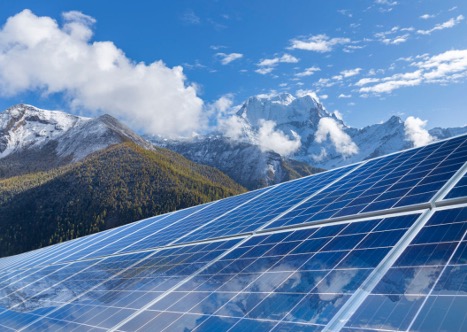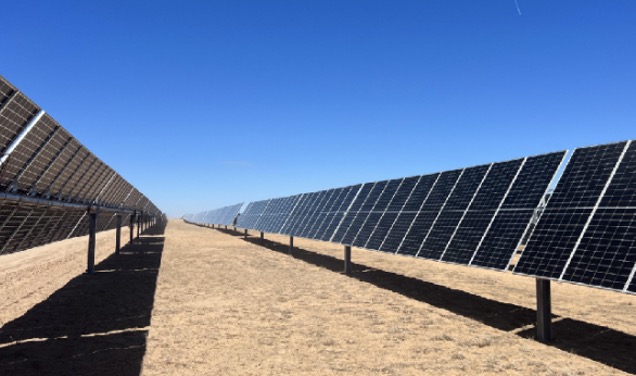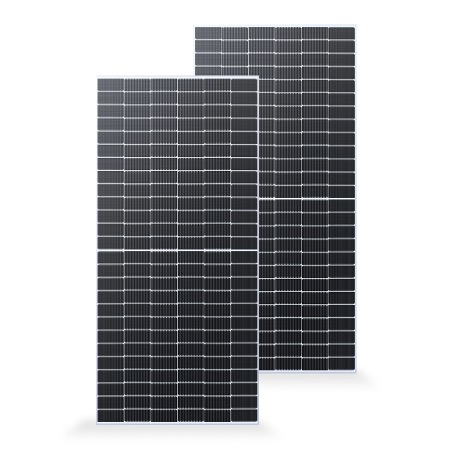Agrivoltaics is an emerging field that promises both renewable energy generation and sustainable land use. Within the United States' borders alone, photovoltaic farms, or PV farms, are already generating an impressive approximately 6 gigawatts (GW) of clean energy[1]. In parallel, Europe's agricultural landscapes are witnessing a notable surge in the adoption of agrivoltaic systems, with a staggering potential capacity of 51 terawatts (TW), poised to yield an annual electricity generation of 71,500 terawatt-hours (TWh)[2]. Remarkably, even dedicating just 1% of agricultural land to agrivoltaics has the potential to unlock a colossal 944 GW of power generation, underscoring its transformative potential[3]. Amidst a projected annual growth rate of 10.1%, agrivoltaics is experiencing a rapid global expansion, a testament to its viability and appeal[4].
So, in today’s article, we are going to explore PV farms comprehensively, navigating this exciting frontier and deepening the understanding of their benefits, challenges, and other details.

What is a PV Farm?
A PV farm, or solar farm, is a large-scale installation of PV panels to harvest the sun's power and generate electricity. It involves a big array of solar panels scattered across fields but linked together to create a unified solar system. This landscape naturally prompts inquiries into the question- what is agrivoltaics?
Agrivoltaics is an innovative concept that marries agricultural production with solar energy generation, allowing for crop cultivation or the rearing of livestock beneath or in close proximity to the solar panels. Envision it as an advanced iteration of the PV farm, where the dual utilization of land becomes a reality, seamlessly blending the practices of agriculture with the harvest of solar energy. It represents a harmonious coexistence, maximizing the potential of every inch of land for both food production and renewable energy generation.
Viability of Setting Up PV Farms
PV farms make the best use of land for farming and solar photovoltaic energy generation. However, it is vital to understand the viability of setting up PV farms before proceeding:
Benefits of PV Farms
Better Land Utilization
Agrivoltaics represents a groundbreaking approach to land utilization, offering a win-win scenario for both energy production and agricultural sustainability. You can generate electricity by utilizing solar panels and using the land surface to grow crops. This dual land use paradigm revolutionizes traditional practices, allowing energy generation and agricultural activities to coexist seamlessly, side-by-side.
Microclimate Control for Crops
In PV farms that incorporate agrivoltaics principles, solar panels assume a multifaceted role beyond their primary function of converting sunlight into electricity. During periods of intense sunlight and soaring temperatures, the panels cast a strategic shade over the crops, mitigating the effects of direct radiation and reducing the ambient heat. This shading mechanism not only cools the soil surface, lowering the risk of excessive evaporation and moisture loss but also moderates the temperature fluctuations experienced by the plants. The shade can also create a more favorable microclimate for certain crop varieties that thrive in cooler, less intense light conditions.
Additional Income Sources
PV farms can be additional income sources for farmers. Farmers can install solar systems over their agricultural land and participate in Virtual Power Plants (VPPs) to sell excessive power back to the grid. Secondly, they can also leverage the uses of solar energy in agriculture and save on electricity bills.
Considerations and Challenges of PV Farms
Initial Capital and ROI: Depending on the system capacity you want to install, PV farms can require significant initial capital. Moreover, you cannot determine an accurate ROI due to the volatility of weather conditions and their impact on solar panel efficiency and crop production.
Agricultural Machinery Coexisting with Solar Arrays: When cropping crops alongside solar panels, you also need special agricultural machinery that can operate in that environment. The traditional equipment may not be useful due to limited space. Therefore, careful consideration is required for the right agricultural machinery to coexist with solar arrays. However, the installation may cause reasonable financial pressure.
Changeable Regulations and Policies: Regulations and policies around PV farms can change suddenly. Therefore, it is crucial to keep a regular check on regulations and PV farms to remain compliant with them.

Preparations to Get Started with PV Farms
Setting up a PV farm requires meticulous preparations to ensure a seamless and prosperous implementation. Here are the three essential preparations to get started with PV farms:
Resources for Funding and Support from Government and Private Entities
PV farms can get various funding and support from government and private entities. For example, in the United States, the Rural Energy for America Program offers guaranteed grant funding and loan financing to rural small businesses and agricultural producers for renewable energy systems and new system loads to facilitate agricultural production or processing[5].
Therefore, before starting the agrivoltaics project, please explore the funding sources in your locality to get financial support in setting up PV farms before installation.
Location Planning for Installation
Many factors influence the successful implementation of PV farms, but the right location choice is a crucial one. You need to choose the right location and land that provides the best solar exposure, high soil fertility, and close accessibility to the grid. Therefore, you should spend some time exploring and picking the best site for a PV farm. You should better do the site testing before you nail down a suitable site.
Arranging PV Farm Components
PV farms should equip many essential components. Some of the main ones include:
Solar panels
Inverters
Mounting structures
Battery
Cables
Charge controller
Monitoring system
All the above components are related to energy generation. Since your target is also to yield crops, you have to arrange the necessary agricultural components as well. If possible, choose high-quality products in order to ensure the output.
Elite Solar's 182-78 Type: Your Ideal Companion for PV Farms
If you have top-notch solar panels with high efficiency, you can generate more power from your PV farm. This is where Elite Solar comes into action with its 182-78 Type solar panels.
As a leading supplier and manufacturer of PV panels, we, Elite Solar, are capable of providing reliable PV solar panels to our clients. Our Elite Solar's 182-78 Type is a highly efficient and durable vertical bifacial solar panel.

Here’re the details:
22.7% high module efficiency with 635W module power, handling various environmental conditions
N-Type M10 wafer, TOPCon solar cells
Enhanced performance for environments characterized by scarce land availability
Lower BOS and LCOE costs due to increased efficiency
Resistance to Snow load (5400 Pascal) and wind load (2400 Pascal)
Conclusion
PV farms, particularly those incorporating agrivoltaic systems, represent an optimal approach to dual-purpose land utilization, simultaneously fostering renewable energy generation and sustainable crop cultivation. However, establishing a profitable PV farm necessitates a substantial initial investment, alongside securing suitable land and acquiring the necessary components. Furthermore, meticulous attention must be devoted to sourcing resilient and high-efficiency solar panels, thereby maximizing power output.
As the premium provider of photovoltaic modules with over 19 years of market presence, we, Elite Solar, offer the best solar modules for PV farms. Our solar panels offer over 20% efficiency, years of durability, high performance, and more.
If you are interested, please visit our Elite Solar’s official website to get more information!
References
[1] Available at: https://www.pv-magazine.com/2024/01/16/has-the-us-caught-up-with-european-agrivoltaic-deployment/
[2] Available at: https://www.pv-magazine.com/2023/07/14/new-research-identifies-potential-for-51-tw-of-agrivoltaics-in-europe/
[3] Available at: https://www.pv-magazine.com/2023/10/13/using-agrivoltaics-on-1-of-eu-farmland-could-lead-to-944-gw-installed-capacity-jrc-says/#:~:text=Up%20to%20944%20GW%20direct,Commission's%20Joint%20Research%20Centre%20(JRC)
[4] Available at: https://pv-magazine-usa.com/2023/03/13/agrivoltaics-market-valued-at-9-3-billion/
[5] Available at: https://www.rd.usda.gov/programs-services/energy-programs/rural-energy-america-program-renewable-energy-systems-energy-efficiency-improvement-guaranteed-loans

